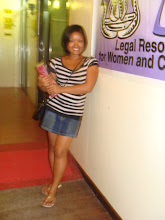
Typical Canopy setup consists of a cluster of up to 6 co-located standard access point
Access Point can refer to:*Access Point , a location on Anvers Island, Antarctica*Wireless access point, a wireless networking device...
s, each with a 60 degree horizontal beamwidth
In telecommunication, the term beamwidth has the following meanings:1. In the radio regime, of an antenna pattern, the angle between the half-power points of the main lobe, when referenced to the peak effective radiated power of the main lobe....
antenna, to achieve 360 degree coverage. Also included would be one or more backhauls or otherwise out-of-band links (to carry data to/from other network ocations) and a Cluster Management Module (CMM) to provide power and synchronization to each Canopy AP or Backhaul Module(BM).
Customers of the system receive service through subscriber modules (SMs) aimed towards the AP. The SMs should be mounted on the tall point of a building to get a reliable connection else Fresnel zone
File:FresnelSVG.svgIn optics and radio telecommunication, a Fresnel zone, named for physicist Augustin-Jean Fresnel, is one of a number of concentric ellipsoids of revolution which define volumes in the radiation pattern of a circular aperture ....
obstruction will weaken the signal. Under ideal operating conditions connections at distances up to 3.5 miles can be achieved using equipment with integrated antennas
An 'antenna' is a transducer designed to transmitter or receive Electromagnetic radiations. In other words, antennas convert electromagnetic waves into electrical currents and vice versa....
. Network operators can opt to install reflector dishes or Stinger antennas, or to use Canopy models that accept external antennas at one or both ends of the link to increase coverage distance.
Most Canopy equipment receives its power using Power over Ethernet
Power over Ethernet or PoE technology describes a system to transfer electrical power, along with data, to remote devices over standard twisted-pair cable in an Ethernet network....
, however, none of its standards comply with IEEE 802.3af.
In general, the 900 MHz version is more effective for use in outlying areas because of its ability to penetrate through trees. However, it requires careful installation due to the easy propagation of interference on that band.



No comments:
Post a Comment